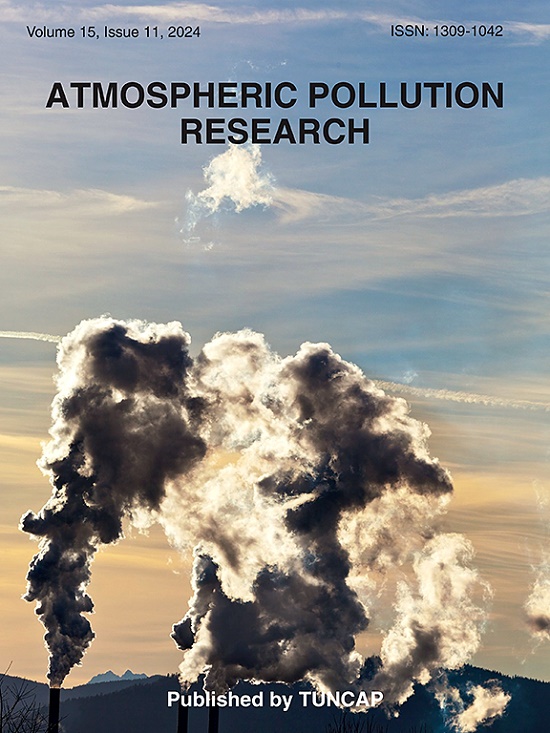Correlating particulate matter and planetary boundary layer dynamics in northwestern South America: A case study of Santiago de Cali
IF 3.9
3区 环境科学与生态学
Q2 ENVIRONMENTAL SCIENCES
引用次数: 0
Abstract
The relationship between particulate matter (PM) levels and planetary boundary layer height (PBLH) is investigated in Santiago de Cali, a tropical city located above the equator in southwestern Colombia, in the northwestern region of South America. Correlations are studied during both the dry and wet seasons, at different locations of local air quality stations, and under different wind regimes. Hourly estimates of PBL height are derived from Lidar signals using the Extended Kalman Filter (EKF) method, while Bayesian linear regression is used to quantify the PM-PBLH correlation. The results indicate a negative correlation between PM and PBLH, observed during both dry and wet seasons. Furthermore, the location of the observation can influence the relationship between the variables. The correlation is negative for stations located near the western foothills, although the strength of this relationship is reduced at the easternmost air quality station, while a positive correlation was observed at the rural background station. We analyzed the air mass transport regimes for these stations using bivariate plots and cluster analysis, and were able to identify local and distant potential pollution sources that could explain the PM-PBLH correlation behavior. This study advances our understanding of PBL height, its temporal evolution, and its relationship with PM10 and PM2.5 in a Colombian tropical Andean city characterized by distinct dry and wet seasons and complex topography and wind patterns.
南美西北部颗粒物质与行星边界层动力学的关联:圣地亚哥德卡利的案例研究
在南美洲西北部哥伦比亚西南部赤道以上的热带城市圣地亚哥德卡利,研究了颗粒物(PM)水平与行星边界层高度(PBLH)之间的关系。在干湿季节,在当地空气质量站的不同位置,以及在不同的风况下,研究了相关性。每小时PBL高度的估计是使用扩展卡尔曼滤波(EKF)方法从激光雷达信号中获得的,而贝叶斯线性回归用于量化PM-PBLH的相关性。结果表明,在干湿季节,PM与PBLH均呈负相关。此外,观测的位置会影响变量之间的关系。位于西部山麓附近的气象站的相关性为负,尽管这种关系的强度在最东部的空气质量站有所减弱,而在农村背景站则观察到正相关。我们使用双变量图和聚类分析分析了这些站点的气团运输机制,并能够识别出可以解释PM-PBLH相关行为的本地和远处潜在污染源。本研究对哥伦比亚热带安第斯山脉城市的PBL高度、时间演变及其与PM10和PM2.5的关系进行了深入了解,该城市具有明显的干湿季节特征和复杂的地形和风型。
本文章由计算机程序翻译,如有差异,请以英文原文为准。
求助全文
约1分钟内获得全文
求助全文
来源期刊

Atmospheric Pollution Research
ENVIRONMENTAL SCIENCES-
CiteScore
8.30
自引率
6.70%
发文量
256
审稿时长
36 days
期刊介绍:
Atmospheric Pollution Research (APR) is an international journal designed for the publication of articles on air pollution. Papers should present novel experimental results, theory and modeling of air pollution on local, regional, or global scales. Areas covered are research on inorganic, organic, and persistent organic air pollutants, air quality monitoring, air quality management, atmospheric dispersion and transport, air-surface (soil, water, and vegetation) exchange of pollutants, dry and wet deposition, indoor air quality, exposure assessment, health effects, satellite measurements, natural emissions, atmospheric chemistry, greenhouse gases, and effects on climate change.
 求助内容:
求助内容: 应助结果提醒方式:
应助结果提醒方式:


